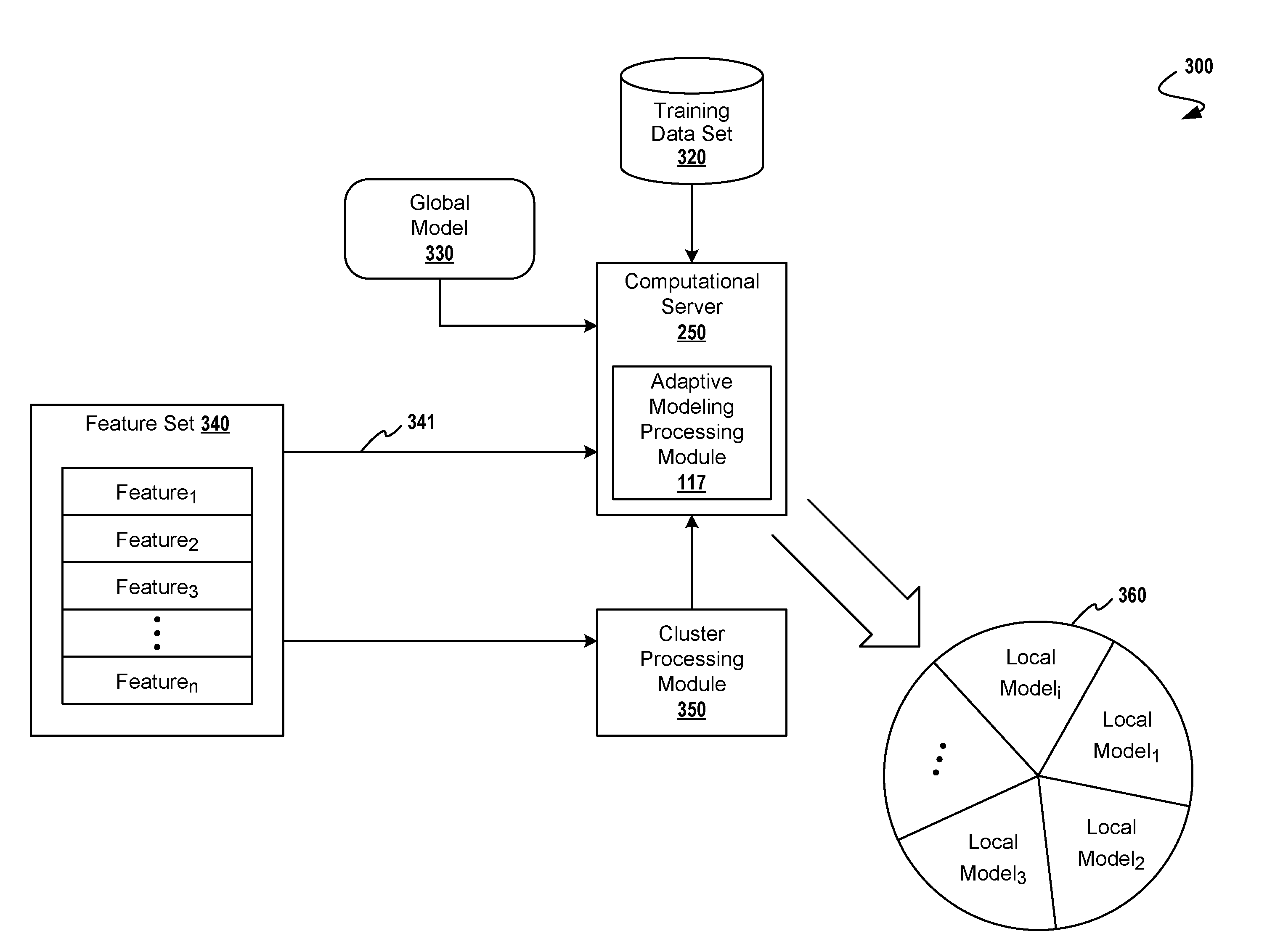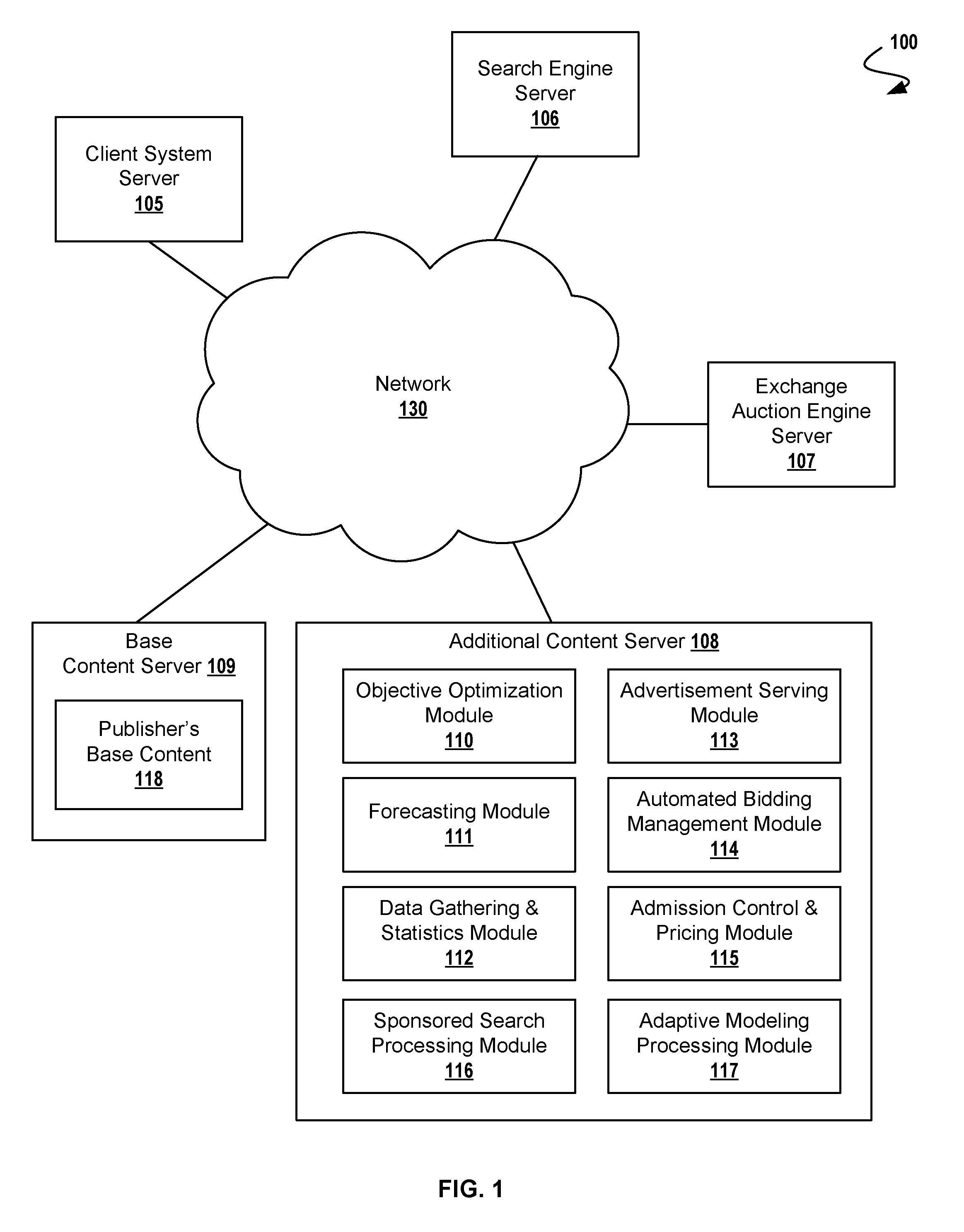Estimating Probabilities of Events in Sponsored Search Using Adaptive Models
a technology of adaptive models and probabilities, applied in probabilistic networks, pulse techniques, instruments, etc., can solve the problems of not being able to accurately characterize all sources of variability observed, single model complexity may not be enough to characterize data for maximum (or even improved) predictive
- Summary
- Abstract
- Description
- Claims
- Application Information
AI Technical Summary
Benefits of technology
Problems solved by technology
Method used
Image
Examples
Embodiment Construction
[0016]In the following description, numerous details are set forth for purpose of explanation. However, one of ordinary skill in the art will realize that the invention may be practiced without the use of these specific details. In other instances, well-known structures and devices are shown in block diagram form in order to not obscure the description of the invention with unnecessary detail.
Overview of Networked Systems for Online Advertising
[0017]FIG. 1 depicts an advertising server network environment including modules for estimating probabilities of events in sponsored search using adaptive models. In the context of internet advertising, placement of advertisements within an internet environment (e.g. environment 100 of FIG. 1) has become common. By way of a simplified description, an Internet advertiser may select a particular property (e.g. Yahoo.com / Search), and may create an advertisement such that whenever any internet user, via a client system server 105, renders the web ...
PUM
 Login to View More
Login to View More Abstract
Description
Claims
Application Information
 Login to View More
Login to View More - R&D
- Intellectual Property
- Life Sciences
- Materials
- Tech Scout
- Unparalleled Data Quality
- Higher Quality Content
- 60% Fewer Hallucinations
Browse by: Latest US Patents, China's latest patents, Technical Efficacy Thesaurus, Application Domain, Technology Topic, Popular Technical Reports.
© 2025 PatSnap. All rights reserved.Legal|Privacy policy|Modern Slavery Act Transparency Statement|Sitemap|About US| Contact US: help@patsnap.com



